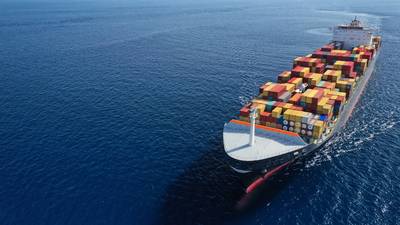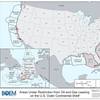China's August Exports Surprisingly Strong
China’s exports unexpectedly grew at a faster pace in August thanks to solid global demand, helping take some of the pressure off the world’s second-biggest economy as it navigates its way through headwinds from several fronts.
The Asian giant staged an impressive recovery from a coronavirus-battered slump, but economic momentum has weakened recently due to the Delta variant-driven COVID-19 outbreaks, high raw material prices, slowing factory activity, tighter measures to tame hot property prices and a campaign to reduce carbon emissions.
Shipments from the world’s biggest exporter in August rose 25.6% year-on-year, picking up speed from a 19.3.% gain in July, customs data showed on Tuesday, pointing to some resilience in China’s industrial sector.
Analysts polled by Reuters had forecast growth of 17.1%.
“While near-term headwinds remain, supply constraints in China have eased and we think the global economic recovery will continue to underpin China’s exports later this year and in 2022,” said Louis Kuijs, head of Asia economics at Oxford Economics.
Exports from neighboring countries also showed encouraging growth last month, with South Korean shipments accelerating on strong overseas demand.
The shipments breakdown showed a broad-based uptick across all goods types, said Sheana Yue, assistant economist at Capital Economics.
“In particular, the rebound in Chinese-made consumer goods such as electronics, furniture and recreational products possibly reflected retailers in advanced economies replenishing their inventories ahead of the Christmas shopping season,” said Yue.
Moreover, some of the port gridlock appears to have cleared in a boost to China’s shippers last month.
The eastern coastal ports have suffered congestion as a terminal at the country’s second biggest container port shut down for two weeks due to a COVID-19 case. That put further pressure on global supply chains already struggling with a shortage of container vessels and high raw material prices.
The stretched global shipping capacity has left many boxes of finished goods piled up on Chinese factory floors, a factor set to bump up Chinese export numbers over coming months, said Meng Xianglong, founder of Heji Trade & Credit Research Centre based in the port city of Ningbo.
“I think it’s expected that China’s robust export growth will extend until the end of this year (around Christmas) or even into the beginning of the next year,” Meng said, adding that some factories are fully booked until the first quarter of 2022.
More stimulus on tap?
However, behind the robust headline figures, businesses are struggling on the ground. Companies faced increasing pressure here in August as factory activity expanded at a slower pace while the services sector slumped into contraction. A global semiconductor shortage has added to the strains on exporters.
The country appears to have largely contained the latest coronavirus outbreaks of the more infectious Delta variant, but it prompted measures including mass testing for millions of people as well as travel restrictions of varying degrees in August.
Many analysts expect the central bank to deliver a further cut to the amount of cash banks must hold as reserves later this year to lift growth, on top of July's cut here which released around 1 trillion yuan ($6.47 trillion) in long-term liquidity into the economy.
Imports increased 33.1% year-on-year in August, beating an expected 26.8% gain in the Reuters poll, led by still high commodity prices and partly reflecting the statistical effect of the low figures a year ago.
Commodity prices remain elevated despite Beijing’s attempts to cool them. In July, imports grew 28.1%.
China’s coal imports in August rose 35.8% from a year ago due to tight domestic supply and strong demand, while iron ore imports also picked up for the first time in five months.
China posted a trade surplus of $58.34 billion in August, versus the poll’s forecast for a $51.05 billion surplus and $56.58 billion in July.
The trade surplus with the United States - a source of years-long friction between the two economic powers - rose to $37.68 billion from $35.4 billion in July, Reuters calculations based on the customs data showed.
(Reporting by Colin Qian, Stella Qiu and Ryan Woo; Editing by Shri Navaratnam)















